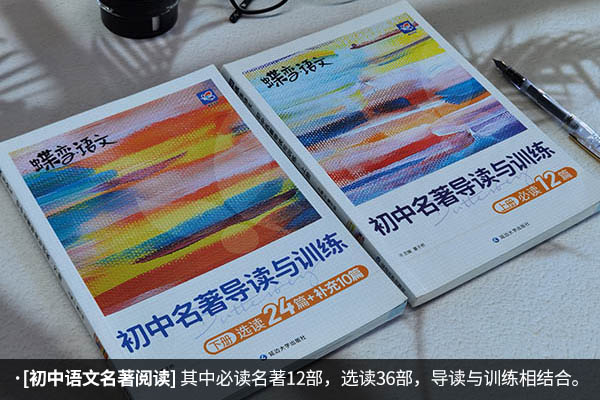初中英语语法大全:冠词是置于名词之前,说明名词所表示的人或事物的一种虚词,它不能离开名词而单独存在。冠词有两种:一种是定冠词(the Definite Article);the一种是不定冠词(the Indefinite Article). a an

1、代词及be动词
主格 I we you you she/he/it they
宾格 me us you you her/him/it them
代词所有格 my our your your her/his/its their
名词性代词 mine ours yours yours hers/his/its theirs
be动词现在时 Am are are are is are
be动词过去时 was were were were was were
2、名词的复数
规则变化的名词复数形式
规则1 一般情况+s e.g. shell→shells toy→toys
规则2 以s, x, ch, sh结尾+es e.g. fox→foxes church→churches
规则3 以o结尾+s或+es e.g. radio→radios potato→potatoes
规则4 以f, fe结尾的,变f, fe为ves e.g. life→lives half→halves
规则5 以辅音字母+y结尾, 变y为i+es e.g. sky→skies study→studies
3、动词的第三人称单数形式
规则1 一般情况+s e.g. like-likes, look-looks
规则2 以s, x, ch, sh和o结尾+es e.g. do-does, catch-catches
规则3 以辅音字母+y结尾, 变y为i+es e.g. carry-carries, fly-flies
4、动词现在分词
规则1 一般动词加-ing e.g. look-looking, read-reading, play-playing
规则2 以不发音的字母结尾的单词去e加-ing e.g. make-making, take-taking, arrive-arriving
规则3 重读闭音节词结尾, 即单词中只有一个元音字母,其后紧跟一个辅音字母的词,双写辅音字母再加-ing e. g. run-running, sit-sitting, get-getting, swim-swimming, stop-stopping
5、动词过去式
规则动词变化
规则1 一般动词加-ed e.g. look-looked, watch-watched, play-played.
规则2 以e结尾的加-d e.g. make-maked, arrive-arrived.
规则3 以辅音字母y结尾的变y为i加-ed cry-cried, carry-carried.
规则4 重读闭音节词结尾, 即单词中只有一个元音字母,其后紧跟一个辅音字母的词,双写辅音字母再加-ed stop-stopped
过去式的读音
在清辅音后面(除外)读/t/ e.g. walked, jumped
在浊辅音和元音后读/d/ e.g. washed, watched
在/t/,/d/后读/id/ e.g. waited, hated
一般现在时
概念:经常、反复发生的动作或行为及现在的某种状况。
时间状语:always, usually, often, sometimes, every week (day, year, month…), once a week, on Sundays, etc.
基本结构:①be动词;②行为动词
否定形式:①am/is/are+not; ②此时态的谓语动词若为行为动词,则在其前加don't,如主语为第三人称单数,则用doesn't,同时还原行为动词。
一般疑问句:①把be动词放于句首;②用助动词do提问,如主语为第三人称单数,则用does,同时,还原行为动词。
现在进行时
概念:表示现阶段或说话时正在进行的动作及行为。
时间状语:now, at this time, these days, etc.
基本结构:am/is/are+doing
否定形式:am/is/are+not+doing.
一般疑问句:把be动词放于句首。
(1)定冠词的用法表示上文中所提到过的人或物。
eg:I have two children, a boy and a girl. The boy’s name is Mark. The girl’s name is Penny.
(2)特指某(些)人或物。
eg:The girl in a red dress comes from America.
(3)指说话人和听话人都熟悉的人或物。
eg: My shoes are under the bed.
Please open the window.
(4)用在形容最高级和部分比较级前,及形容词only, very, same等前面:
Eg: That's the very thing I've been looking for. 那正是我要找的东西。
Tom is the taller of the two boys.
He is the only person who didn't pass the exam.
他是唯一一个没通过考试的人。
(5)用在序数词前。
eg Monday is the second day of a week.
Where do you live? I live on the second floor.

掌中英语是一款帮助初中学生提高听说读写能力的软件。它提供了丰富的课程资料和学习内容,通过互动的录音和交流,帮助学生进行口语训练和提高英语综合...

初一语文比较好的教辅资料有《蝶变名著导读》《蝶变初中知识点清单》《教材划重点》《点拨》《教材帮》等等。蝶变初中语文知识点清单非常适合初一学生...

初中数学难点在初二。这个时间段是孩子学习的分水岭,这门学科学习同样,会在难度上更上一层楼。初二的数学会有:分式、反比例函数、勾股定理、四边形...

初中各科比较实用的教辅书有《蝶变初中知识点清单》《点拨》《尖子生学案》《新教材完全解读》《中学教材全解》《一本涂书》等等。购买什么难度的教辅...

初中生成绩不好,首先就需要一个可行的学习计划,用来指导学生的学习。正确的学习目标是良好的学习动机的反映,是可以使学生积极学习、克服困难的内在...

初中语文阅读理解答题模板:本文的线索是什么?回答此题的关键是看文章的标题,文章的标题往往就是全文的线索;其次是关注文中反复出现的关键词语,这...

初中数学一对一上门家教一小时一般在百元左右,根据学龄、基础的不同,具体收费也会不同,大学生一对一家教70-150元/小时,在职老师150-4...

学与用是相辅相存的,只有常用才可以达到巩固知识的目的,而学又为写提供了源头活水。学初中语文补课难,难在需要你持之以恒地积累,难在必须遵循语文...